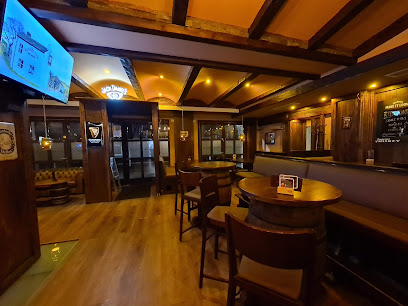
Höckerlinie des Westwalls: A Silent Witness to History
Explore the Höckerlinie des Westwalls in Lambsborn, an intriguing historical landmark showcasing WWII defenses and military ingenuity, offering a poignant glimpse into the past.
The Höckerlinie des Westwalls near Lambsborn is a poignant reminder of World War II and the defensive strategies employed during that era. Part of the larger Siegfried Line (or Westwall), this section features rows of concrete "dragon's teeth" designed as anti-tank barriers. Today, the moss-covered remnants offer a somber yet fascinating glimpse into the past, inviting visitors to reflect on the war's impact and the landscape's resilience. Walking among these silent sentinels provides a unique historical experience, set against the backdrop of the tranquil German countryside. The site is easily accessible and offers a thought-provoking encounter with military history, making it a worthwhile stop for those interested in the Second World War and its lasting marks on the region. Explore the area and discover the bunkers and trenches that complement the dragon's teeth, offering a comprehensive view of this defensive line.
A brief summary to Höckerlinie des Westwalls
- K74, Lambsborn, 66894, DE
Local tips
- Visit early in the morning or late in the afternoon for a quieter experience and better lighting for photos.
- Wear comfortable shoes, as the terrain can be uneven and requires some walking.
- Bring a camera to capture the stunning views and the historical structures.
- Consider visiting during the off-peak season for a more intimate experience with the site.
- Check for any guided tours that may provide deeper insights into the site's history.
Getting There
-
Driving
If arriving by car from the general Palatinate region, navigate towards Lambsborn. Use a GPS or mapping app, inputting the destination as 'K74, 66894 Lambsborn'. The Höckerlinie des Westwalls is located along the K74 road. Once in Lambsborn, follow roadside signs directing you to the historical landmark. Free parking is available near the location.
-
Public Transport
To reach the Höckerlinie des Westwalls via public transport, first take a train to Landstuhl or Kaiserslautern, the nearest major train stations. From either station, board a regional bus (Bus line 104 from Landstuhl or Bus line 102 from Kaiserslautern) heading towards Lambsborn. Check bus schedules in advance as services may vary. Disembark at the nearest bus stop in Lambsborn ('Lambsborn, Ortsmitte' is served hourly by buses from Landstuhl, costing approximately €4-€7), and from there, it's a short walk to K74 where the Höckerlinie des Westwalls is located.
Discover more about Höckerlinie des Westwalls
Iconic landmarks you can’t miss
Höckerlinie des Westwalls
0.0 km
Explore the Höckerlinie des Westwalls in Lambsborn, an intriguing historical landmark showcasing WWII defenses and military ingenuity.
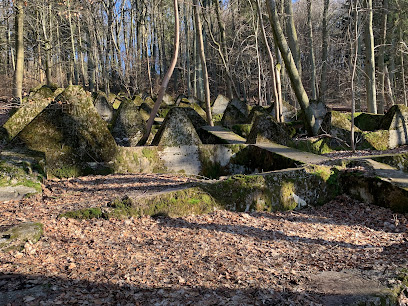
Anti-tank trench WWII
10.8 km
Discover the historic Anti-tank Trench in Ottweiler, a remarkable WWII landmark steeped in history and resilience, perfect for history enthusiasts and curious travelers.
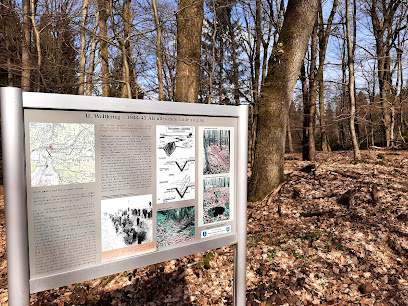
Southwest Palatinate
17.4 km
Explore the cultural richness and breathtaking landscapes of Southwest Palatinate, a hidden gem in Germany's scenic heart.
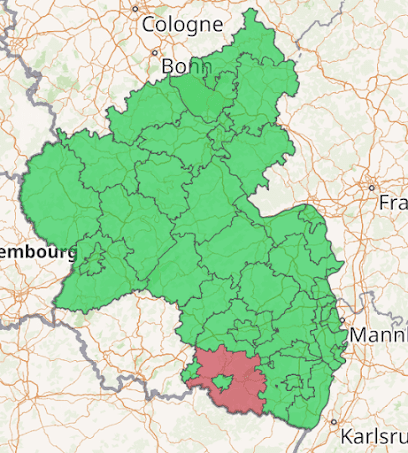
Roman Ruins
19.0 km
Uncover the past at Kaiserslautern's Roman Ruins, where ancient history meets serene landscapes, offering a unique glimpse into the Roman Empire's legacy in Germany.
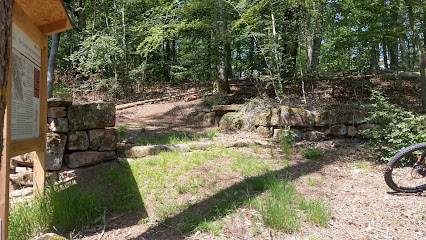
Ortsdenkmal 1980
20.3 km
Explore the rich history of Riedelberg at the Ortsdenkmal 1980, a captivating monument that reflects the cultural heritage of the region.
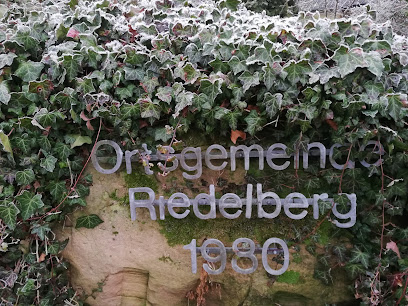
Forum Alte Post
21.9 km
Explore the rich history and culture of Pirmasens at the Forum Alte Post Museum, where engaging exhibits bring the past to life.
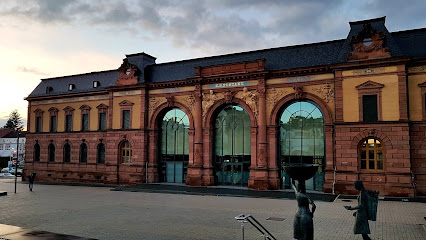
Schillereiche auf dem Wartekopf
25.3 km
Experience the breathtaking natural beauty and tranquil atmosphere at Schillereiche auf dem Wartekopf in Ulmet, Germany, a perfect destination for nature lovers.
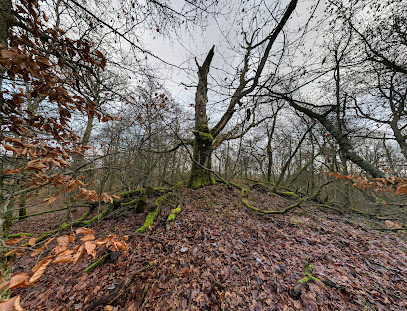
Japanischer Garten und Japan-Imbiss
27.2 km
Discover tranquility and culinary delights at the Japanese Garden and Snack Bar in Kaiserslautern, a perfect blend of nature and authentic Japanese cuisine.
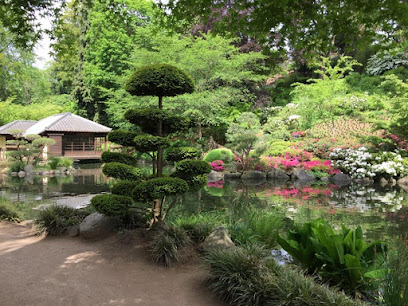
Institute for Palatine History and Folklife Studies
27.6 km
Delve into the rich cultural and historical tapestry of the Palatinate at the Institute for Palatine History and Folklife Studies in Kaiserslautern.
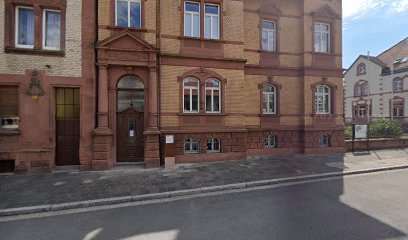
Römerstraße im Pfälzerwald
31.8 km
Explore Römerstraße im Pfälzerwald, a captivating historical landmark in Germany’s scenic Pfälzerwald region, rich in history and natural beauty.
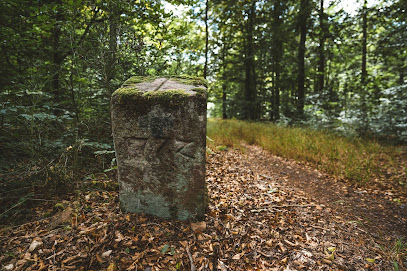
Palatinate Forest
32.6 km
Experience the beauty of Palatinate Forest: a UNESCO Biosphere Reserve with stunning landscapes, unique rock formations, and endless hiking trails.

Bodendenkmal im Landtagsgarten
33.8 km
Explore the Bodendenkmal im Landtagsgarten, an archaeological gem in Saarbrücken that beautifully blends history with serene natural landscapes.

Nationalparkamt Hunsrück-Hochwald
37.1 km
Discover Germany's Hunsrück-Hochwald National Park: Witness the return of wilderness, explore ancient forests, and immerse yourself in nature's tranquility in this ecological haven.
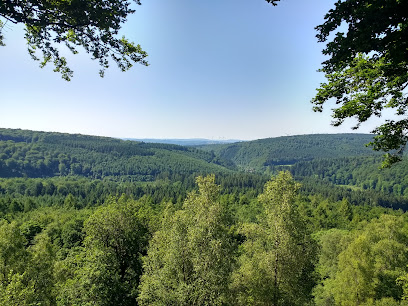
glockenturm
38.8 km
Explore the Glockenturm in Elmstein, a historical bell tower offering stunning views and a glimpse into the region's rich cultural heritage.
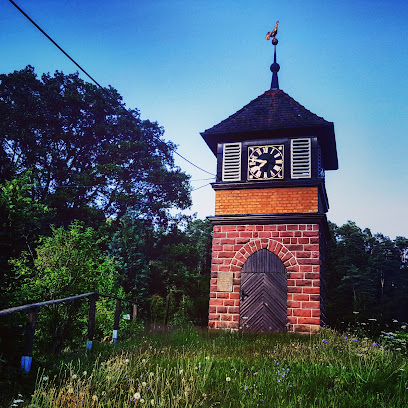
Traumschleife Rund um die Kama
38.8 km
Discover the enchanting Traumschleife Rund um die Kama near Idar-Oberstein: a blend of scenic hiking, gemstone history, and Roman heritage in the heart of the Saar-Hunsrück.
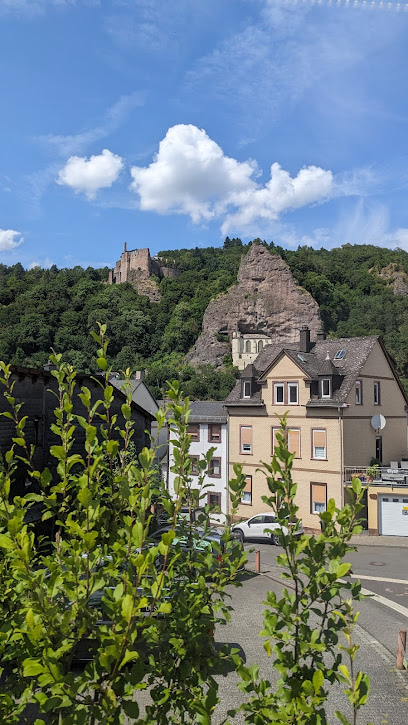
Unmissable attractions to see
Avalonorden e.V., Stalleinfahrt
7.0 km
Experience the serene beauty and rich culture at Avalonorden e.V. in Biedershausen, a hidden gem for tourists seeking tranquility in rural Germany.

Schwarzenacker Roman Museum
11.2 km
Explore the rich history of the Roman Empire at the Schwarzenacker Roman Museum, where fascinating artifacts and engaging exhibits await.

Bismarckturm Landstuhl
12.1 km
Experience the breathtaking views and rich history at Bismarckturm Landstuhl, a historical landmark and tourist attraction in Germany.

Wasserturm Ramstein-Miesenbach
12.6 km
Explore the historic Wasserturm in Ramstein-Miesenbach, a stunning architectural gem with rich history and scenic surroundings, perfect for tourists and photographers.

Nanstein Castle
12.8 km
Explore the enchanting Nanstein Castle, a historical gem in Germany's Pfalz region, offering breathtaking views and a rich medieval legacy.
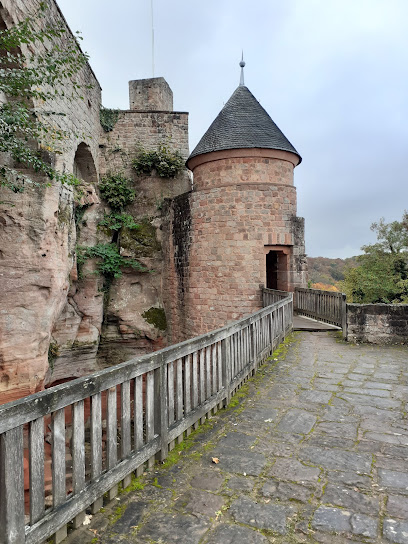
Heidenfelsen
14.0 km
Explore the breathtaking Heidenfelsen, a natural wonder in Pfälzerwald, perfect for hiking enthusiasts and history lovers seeking stunning views.

Aussichtspunkt
14.2 km
Discover the enchanting views at Aussichtspunkt in Kindsbach, a scenic spot perfect for nature lovers and photography enthusiasts.

Kindsbach Lookout
15.7 km
Discover the breathtaking Kindsbach Lookout for panoramic views of nature's splendor, perfect for photography and peaceful retreats.

Felswand bei Kindsbach
15.8 km
Experience the breathtaking natural beauty of Felswand bei Kindsbach, a stunning rock formation perfect for hiking and nature exploration.
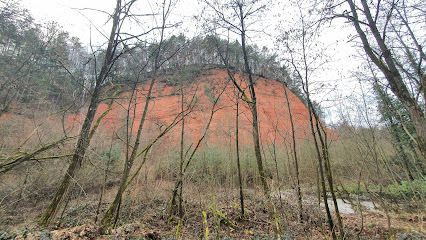
Bliesterrassen
17.2 km
Discover the serene beauty of Bliesterrassen in Neunkirchen, Germany - a perfect escape for nature lovers and photographers.
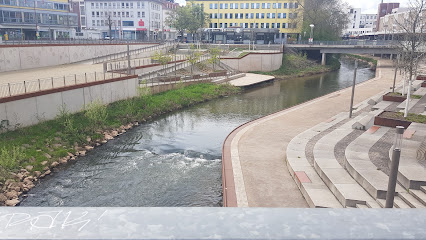
Keltisches Fürstengrab
20.3 km
Discover Keltisches Fürstengrab, an ancient Celtic burial mound in Rodenbach, where history and nature beautifully intertwine.
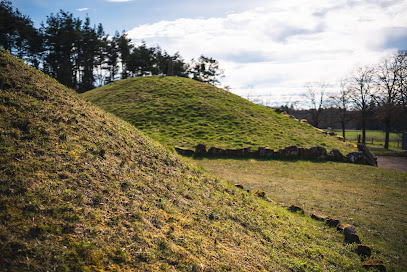
Bruderfels
21.1 km
Explore the stunning rock formations and scenic trails of Bruderfels, a premier hiking area in Rodalben, Germany, perfect for nature lovers and outdoor enthusiasts.

GONDWANA - the Prehistorium
21.5 km
Discover the wonders of the prehistoric world at GONDWANA - The Prehistorium, a unique science museum in Schiffweiler, Germany, perfect for families and curious minds.

Burg Hohenecken
21.6 km
Explore the enchanting Burg Hohenecken, a historical gem in Kaiserslautern that offers breathtaking views and scenic hiking trails amidst rich history.
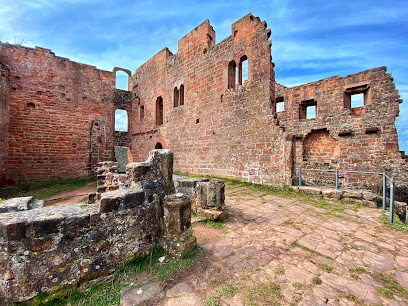
Wassergarten der Grube Reden
21.9 km
Explore Wassergarten der Grube Reden: A serene water garden in Schiffweiler, Germany, rich in aquatic life and stunning natural beauty.
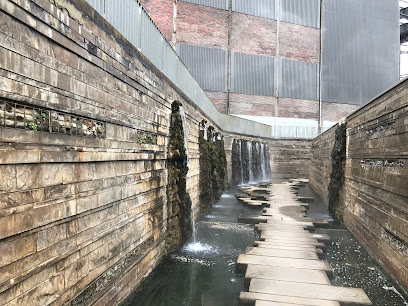
Essential places to dine
Cockpit Lounge
12.6 km
Experience unique dining at Cockpit Lounge in Landstuhl – where culinary delights meet aviation-themed ambiance.

Civat
12.6 km
Discover authentic Middle Eastern flavors at Civat in Landstuhl – where every meal is a culinary journey.
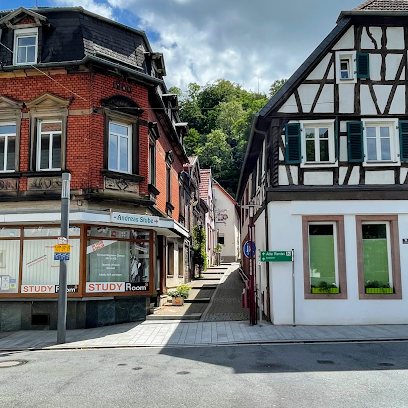
De Belgian Bistro
17.0 km
Experience the authentic taste of Belgium at De Belgian Bistro in Mackenbach - where culinary traditions meet modern flair.
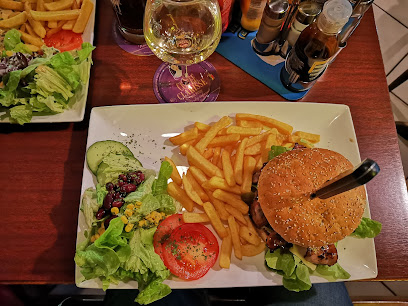
Waldgaststätte Hubehaus
20.3 km
Discover the essence of traditional German dining at Waldgaststätte Hubehaus in Kusel, where rustic charm meets delectable cuisine.
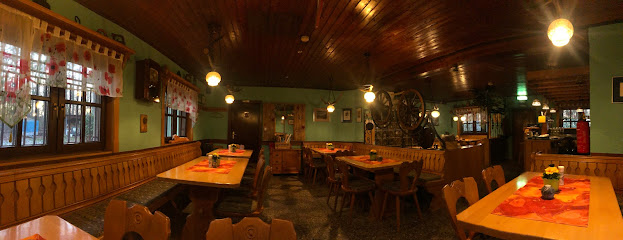
Restaurant Altenwald
24.7 km
Experience the best of German cuisine at Restaurant Altenwald - where tradition meets health-conscious dining in Sulzbach.
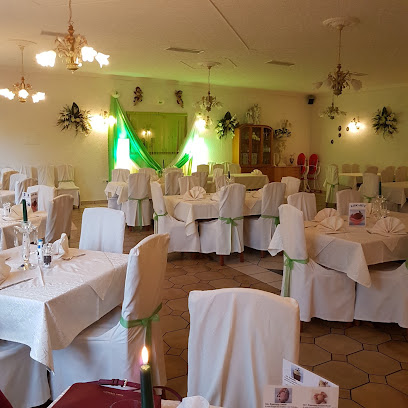
Zäb Dee
25.7 km
Experience authentic Thai cuisine at Zäb Dee in Kaiserslautern – a culinary gem offering vegetarian options and exceptional service.
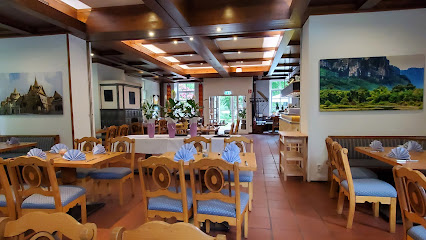
Le Galopin
27.2 km
Experience authentic French cuisine at Le Galopin in Kaiserslautern - where every dish tells a story.
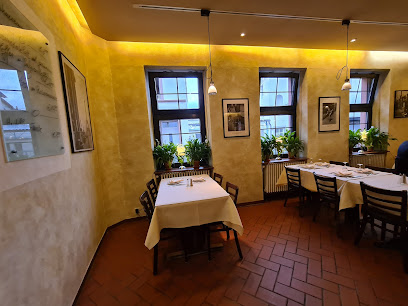
Restaurant Weinhaus Stepp
27.4 km
Discover authentic German cuisine at Restaurant Weinhaus Stepp in Kaiserslautern – where tradition meets taste in every dish.
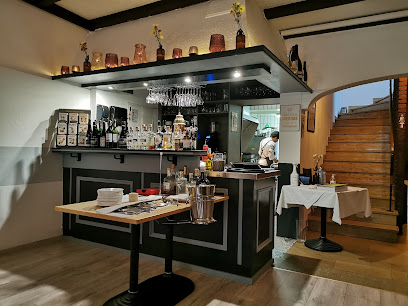
Gaststätte Spinnrädl
27.4 km
Discover the flavors of Palatine at Gaststätte Spinnrädl - a delightful restaurant offering authentic German cuisine and fine wines in Kaiserslautern.
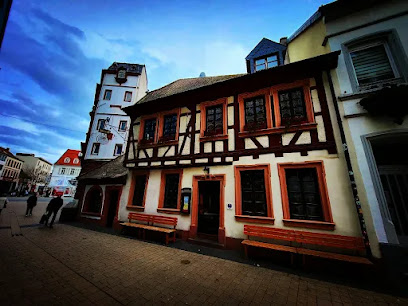
Cardinale
27.5 km
Experience authentic Italian cuisine at Cardinale in Kaiserslautern—where every meal is a celebration of flavor and tradition.
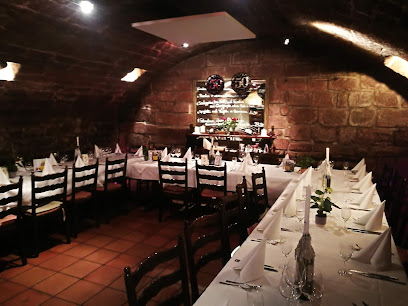
Restaurant 11A
27.6 km
Discover the exquisite flavors of Kaiserslautern at Restaurant 11A - where culinary tradition meets modern elegance.
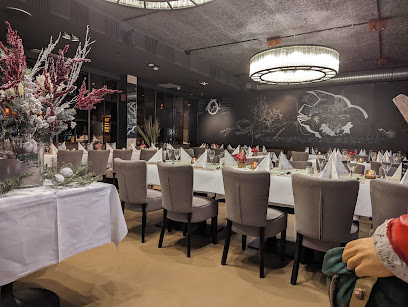
Wurst- Küch
27.7 km
Experience authentic Palatine cuisine at Wurst-Küch in Kaiserslautern—where delicious sausages meet warm hospitality.

Bistrorante Da Adriana
27.7 km
Experience authentic Italian cuisine at Bistrorante Da Adriana in Kaiserslautern, where delicious dishes meet a cozy atmosphere.
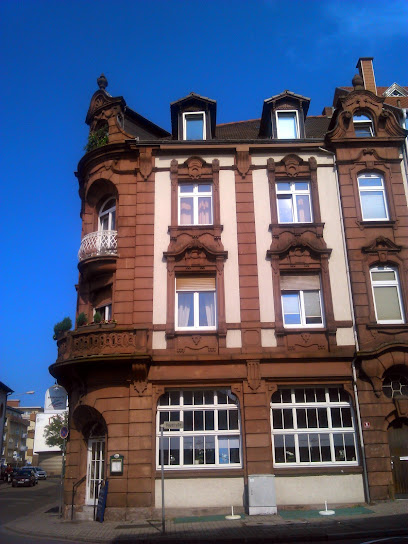
Julien
28.1 km
Savor authentic French cuisine in Kaiserslautern at Restaurant Julien – where culinary excellence meets charming ambiance.
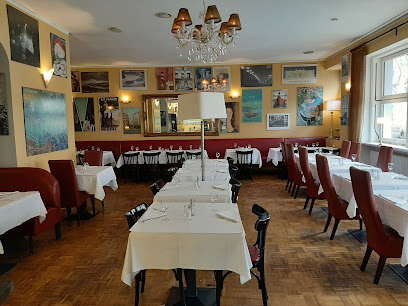
Restaurant Erbsenberg
28.1 km
Discover authentic German cuisine at Restaurant Erbsenberg in Kaiserslautern - where tradition meets taste.
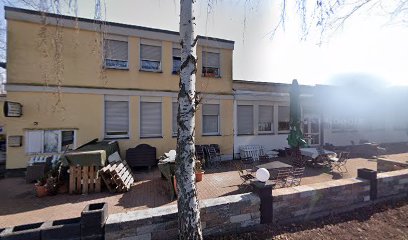
Markets, malls and hidden boutiques
Saarpfalz-Center
7.1 km
Explore the diverse shopping and dining experiences at Saarpfalz-Center, Homburg's premier shopping destination for locals and tourists.
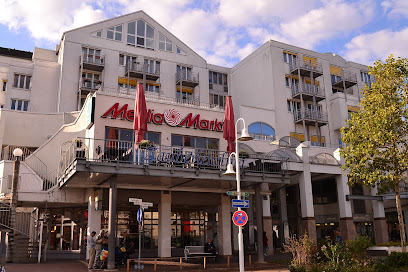
Frankonia Bexbach
9.7 km
Explore the great outdoors with top-notch hunting and outdoor gear at Frankonia Bexbach, your go-to destination for adventure essentials.
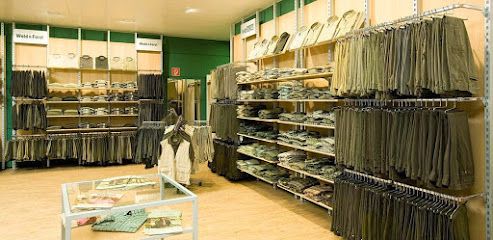
Zweibrücken Fashion Outlet
14.5 km
Discover the ultimate shopping experience at Zweibrücken Fashion Outlet, where style meets savings in a vibrant atmosphere.

Saarpark-Center
17.5 km
Discover the vibrant shopping experience at Saarpark-Center in Neunkirchen, where fashion, dining, and entertainment meet.
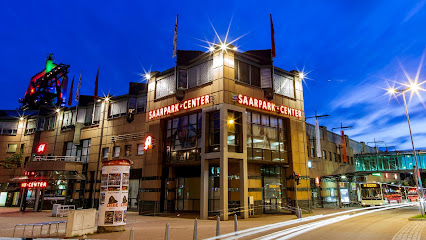
House of Clocks - Gifts, Souvenirs and Dirndl & Lederhosen
20.6 km
Explore the House of Clocks in Weilerbach for unique souvenirs, exquisite timepieces, and traditional Bavarian attire in a charming atmosphere.

Delias Whiskyshop GmbH
22.0 km
Explore the finest selection of whiskies at Delias Whiskyshop in Kaiserslautern, where passion meets expertise.
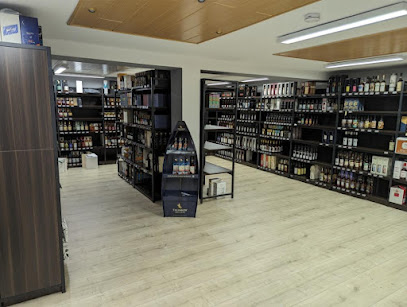
KommA - Fachgeschäft für Papier und mehr
25.8 km
Discover unique gifts and local treasures at KommA in Merchweiler, the perfect stop for tourists seeking memorable souvenirs.

Mystery Auktionshaus
26.3 km
Explore cutting-edge gadgets and rare collectibles at Mystery Auktionshaus, a must-visit electronics store in Illingen, Germany.
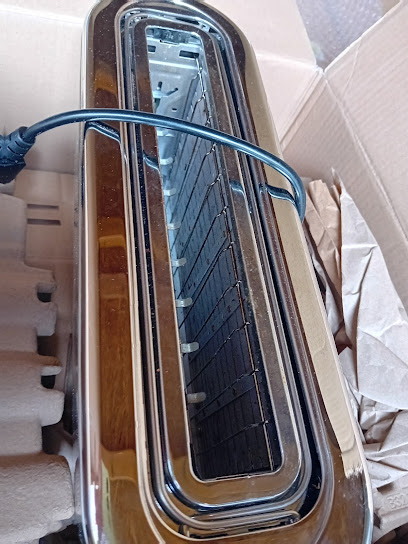
Erika Thiel Textilhandel
26.4 km
Explore the vibrant world of textiles at Erika Thiel Textilhandel in Illingen, a fabric lover's paradise with a diverse selection for all your crafting needs.

Inside Mode Für Sie
26.4 km
Discover style and elegance at Inside Mode Für Sie, a boutique in Illingen offering curated fashion and personalized service.
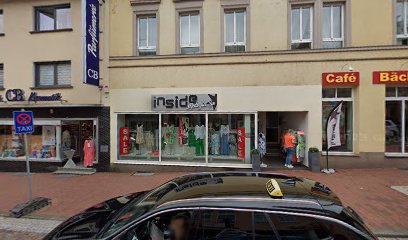
Alex Jeans
26.4 km
Discover high-quality denim and stylish men's clothing at Alex Jeans, the go-to fashion spot in Illingen, Germany.
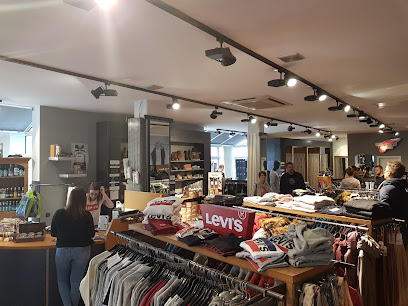
Boutique Monique
26.4 km
Discover Boutique Monique in Illingen: A unique shopping destination for fashion lovers with curated styles and personalized service.
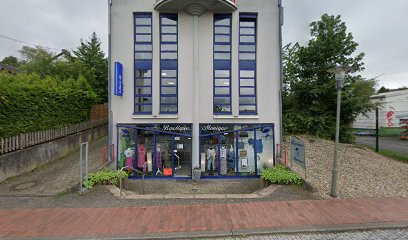
Die Schatzkiste
26.7 km
Explore Die Schatzkiste in Kaiserslautern for vintage finds and unique treasures that tell a story, perfect for tourists seeking local charm.

K in Lautern
27.1 km
Discover a vibrant shopping experience at K in Lautern, where diverse shops and dining await in the heart of Kaiserslautern.
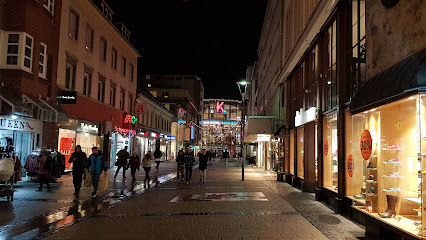
TK Maxx
27.1 km
Explore TK Maxx in Kaiserslautern for unbeatable deals on brand-name clothing, home goods, and unique treasures that will enrich your travel experience.
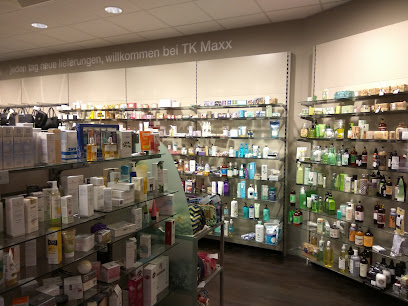
Essential bars & hidden hideouts
Blarney Stone Irish Pub
12.6 km
Discover the charm of Irish culture at Blarney Stone Irish Pub, where hearty meals and lively entertainment await in Landstuhl.
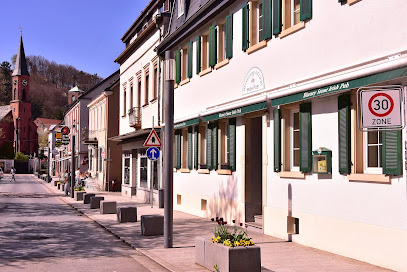
The Red Lion Pub
13.1 km
Experience the charm of The Red Lion Pub in Landstuhl, where traditional German hospitality meets a cozy atmosphere and delicious pub fare.
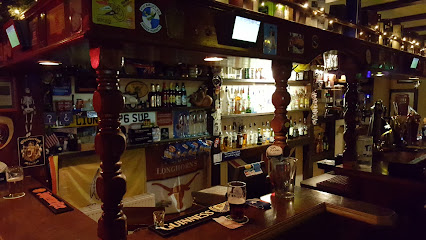
Jack ´n´ Jill Lounge Saarland
14.7 km
Experience the vibrant atmosphere and exquisite cocktails at Jack ´n´ Jill Lounge Saarland, the perfect spot for relaxation and celebration.
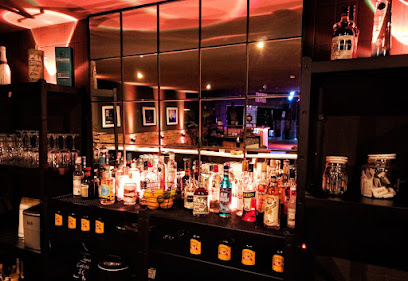
Chillout
17.2 km
Experience the best of Neunkirchen's nightlife at Chillout, your go-to bar for relaxation and socializing with friends.
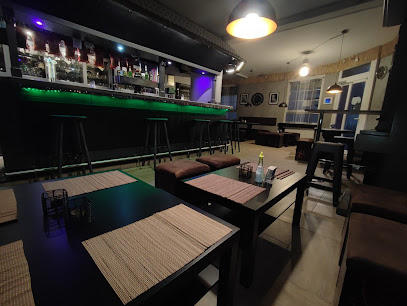
La Roca's Brew Pub
26.2 km
Experience the vibrant atmosphere and local brews at La Roca's Brew Pub in Merchweiler, a top choice for beer lovers and social butterflies.
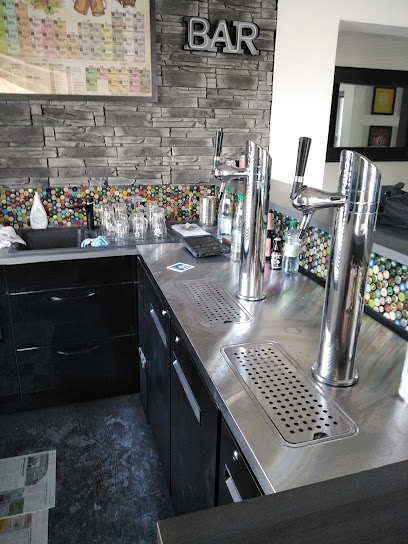
Lindenstübchen Lindenstübchen
26.2 km
Discover the cozy atmosphere and delightful drink selection at Lindenstübchen, the perfect bar to unwind in Kaiserslautern.

Eddy‘s Bar
26.6 km
Experience the vibrant atmosphere of Eddy's Bar in Kaiserslautern, a local favorite for drinks, live music, and unforgettable memories.
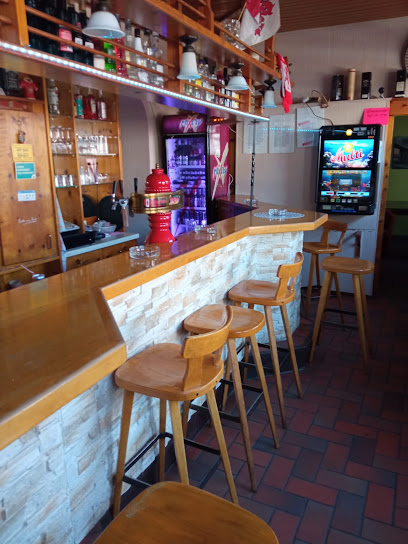
BierBaum Gastro U.G.
26.7 km
Experience the lively atmosphere and local flavors at BierBaum Gastro U.G., Kaiserslautern's charming pub for tourists.
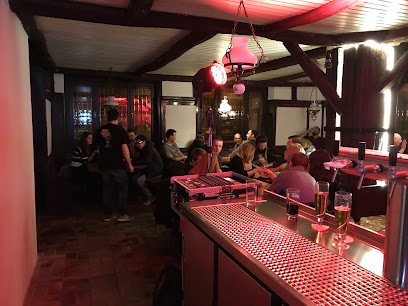
Zack-Zack
27.0 km
Discover Zack-Zack: Kaiserslautern's charming bar offering affordable drinks and a vibrant atmosphere, perfect for enjoying local nightlife.
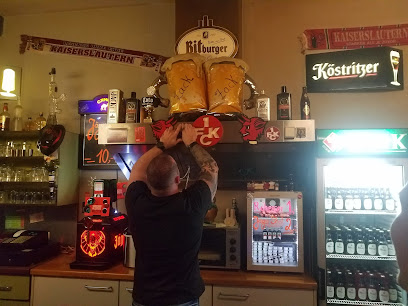
Connect
27.0 km
Discover the vibrant atmosphere of Connect, Kaiserslautern's top bar, where exquisite cocktails and a welcoming vibe await you.

The Loft - Lounge and Bar
27.3 km
Experience the vibrant nightlife at The Loft in Kaiserslautern, where stylish ambiance meets exceptional drinks and unforgettable moments.
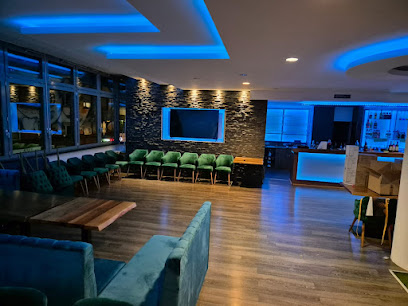
The Harp Irish Pub
27.5 km
Experience authentic Irish culture and cuisine at The Harp Irish Pub in Kaiserslautern, a lively destination for food, drinks, and entertainment.
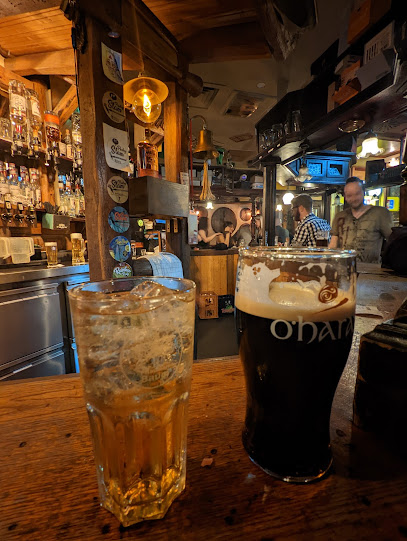
Cuvée Weinbar & Vinothek
27.5 km
Discover the vibrant Cuvée Weinbar & Vinothek in Kaiserslautern, where exquisite wines meet lively music for an unforgettable experience.
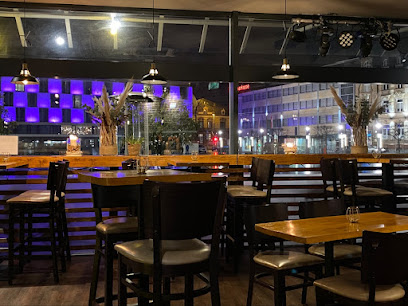
barcode
27.5 km
Discover Barcode Gastropub in Kaiserslautern, where modern cuisine meets a vibrant atmosphere for an unforgettable dining experience.
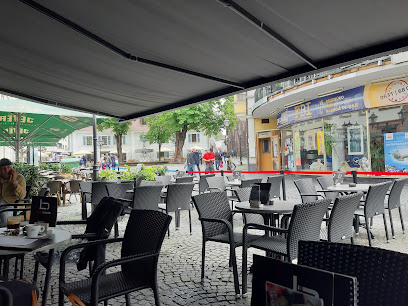
Barrel Inn Kaiserslautern - Irish Pub
27.5 km
Discover the charm of Barrel Inn Kaiserslautern, your go-to Irish pub for delicious food, refreshing drinks, and lively entertainment.
